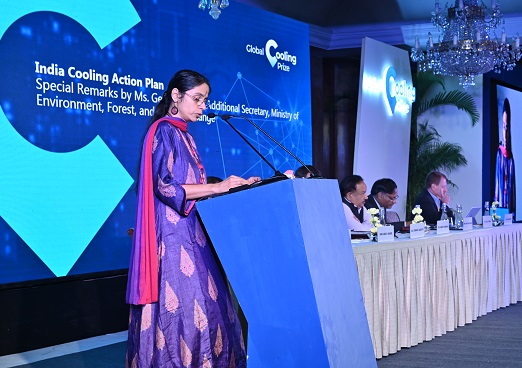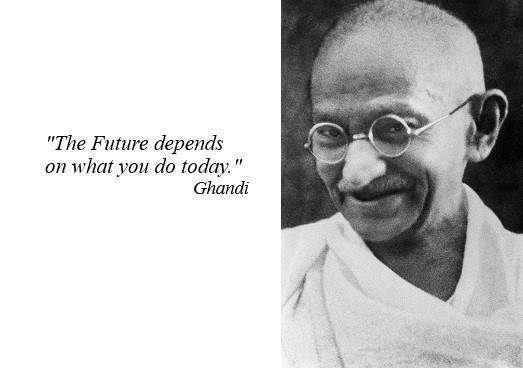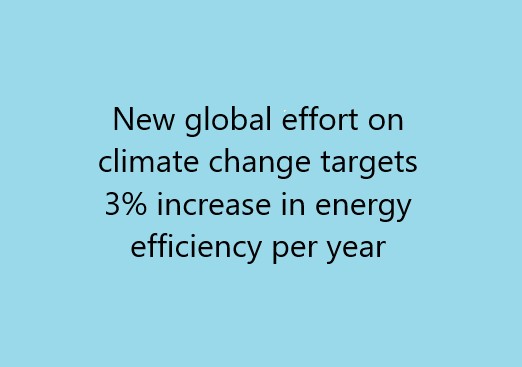Wednesday 12 February 2020
In an earlier blog I referred to leadership as the missing element in the drive towards net zero. Now we are seeing leadership on the issue emerging, both nationally – in some countries a lot more than in the UK I have to say – and in the corporate world. Real leadership however goes beyond setting the target, it has to include driving the development of realistic, deliverable plans to achieve the target, and then driving delivery.
Achieving ‘Net Zero’ is a very clear objective, as long as a timescale is incorporated, somewhat like “land a man on the moon by the end of the decade and return him safely to earth”. Clear objectives are always useful – they can’t be fudged – you either achieve them or you don’t and as someone once said; ‘objectives are optional, constraints are obligatory’. Once leadership sets, or even considers, a net zero target the organisation has to quickly move into formulating a realistic plan of action which sets out the path to overcome the constraints and achieve the objective, otherwise it is just an aspiration. John F. Kennedy provided the leadership to get to the moon by setting the clear target but NASA drove the plan to overcome the many constraints that existed back in 1961 and marshalled the resources to achieve the target. So what are the elements of a coherent plan for achieving net zero?
Of course the first step is to ascertain the current situation, the base line. Any plan should start with a sound baseline covering Scope 1, 2 and 3 emissions. Clearly Scope 3 emissions are more difficult to quantify for many organisations and a degree of uncertainty is understandable in this area. For instance, how does a University measure travel of students? Pragmatic judgements based on what is possible and what isn’t need to be made.
Then a range of possible projects or interventions need to identified. Here creativity techniques like brain storming and lateral thinking can be useful. Techniques such as integrated design are critical for making major breakthroughs in energy performance and emissions rather than mere incremental gains. We need to think outside the box of conventional solutions. Once identified project concepts need to be assessed technically, economically and financially, and contextually.
Technical assessments need to consider the state of technology development and evaluate the reality which is sometimes obscured by hype. It would be unusual for many organisations to take technological development risks, for those that do the decision must be explicit with a full understanding of the risks and not implicit. Technological development is always risky.
Financial and economic evaluation needs to consider all the benefits and not just energy cost savings or reductions in emissions. Benefits with strategic value can include market positioning, publicity, an increased ability to recruit the best employees etc. and can be far more valuable than cost savings. A systems thinking approach is needed to identify and value benefits. Ultimately any plan must be financeable which requires understanding both the organisation’s own resources and its ability to utilise external finance. If external finance is to be utilised the plan has to meet investor requirements.
Contextual analysis is a vital but often neglected stage in capital project development. It is necessary to check for interactions both between projects and with other internal and external factors, for instance the long-term future of a site or a product needs to be properly considered if there is a proposed project to reduce its energy use and emissions. Some combinations of projects are additive whilst some conflict. For complex long-range plans there may be many interactions with both internal and external factors to be considered at different levels. Technical, economic and contextual evaluations themselves will often interact in an iterative process.
Any plan needs to consider risks. This should include the risks of inaction as well as the risks of action. It should start with the risks of climate change, the main parameters of which are well known at high level but as far as possible these should be localised to recognise actual risks on the organisation, physically and financially. The risks of action and inaction on all stakeholders including shareholders, employees, customers, and the supply chains should be considered.
Following concept creation and development with a sufficient degree of robust technical, economic and contextual evaluation, supported by risk analysis, a practical portfolio of projects and actions with costs and timings needs to be assembled, a process that may need many iterations. Then the plan should be stress tested before moving into delivery.
To achieve net zero definitely needs vision and leadership, but it also needs a realistic, well developed plan. Developing such a plan is far from trivial. To then deliver the plan requires hard work and long-term commitment, effective delivery may require changes in remuneration structures to drive the right kind of behaviour throughout the organisation, a change that needs to be driven by strong leadership backed by shareholder pressure.
As Dwight D. Eisenhower said; ‘Plans are nothing, planning is everything’. If your organisation needs assistance with developing a comprehensive net zero plan, and then implementing it, contact me or Alex Rathmell at EnergyPro.

Thursday 19 December 2019
Things have been very busy recently and so I haven’t been able to produce a new blog to mark the Christmas season. So instead here is an old favourite from December 2015. It may be time to update some of them. Have a great Christmas and a healthy and sustainable 2020 from me and the team at EnergyPro.
The end of the year always brings the pressure of whether or not to write something seasonal. This year I thought I would do something different by formulating my Laws of Energy Efficiency. Sir Isaac Newton and the great Arthur C. Clarke stopped at three Laws so I apologize for coming up with 12. They echo some of the themes I have covered in the blog over the last three years.
- Energy efficiency is boring and seriously uncool to most people most of the time.
- Never talk about energy efficiency without mentioning the non-energy benefits which can be seriously cool.
- Talk about energy productivity and not energy efficiency.
- If you are supposed to be an energy journalist never headline a story about renewables with something about “energy efficiency”.
- If you put ten people from ten ESCOs in a room there will be 15 different definitions of what an ESCO is.
- If you have five energy auditors survey any building you will end up with reports in five different formats with savings calculated five different ways, even if they are all recommending the same measures.
- Energy Performance Contracts and ESCOs are not the magic bullet some enthusiasts and failed investment bankers looking for the next big thing think they are.
- Never call energy efficiency a “no brainer” or “low hanging fruit”.
- An exciting energy or energy efficiency discovery in a lab somewhere is not the same as a viable technology, which is not the same as a commercial product, which is not the same as a successful product that has meaningful impact in the world.
- Any politician who finishes an energy speech by saying “and don’t forget energy efficiency” will promptly forget it the next time he or she meets an energy supply lobbyist.
- Energy forecasting is easy, getting it right is difficult. The corollary to this law is that prices can go down as well as up – never forget that in 1986 oil went below $10/barrel oil only months after oil industry bosses said “oil will never sell for less than $20/barrel again” and “our doomsday forecast is $20-25 a barrel”.
- When a distinguished but elderly economist says “what about the Jevons Paradox”, ask him or her if they think improving productivity is a bad idea.
Thanks for reading onlyelevenpercent.com.

Thursday 5 December 2019
On the 15th November I was privileged to be in the opulence of the Taj Mahal hotel in Delhi with several hundred honoured guests, delegates and entrants gathered from all over the world for an event that addressed one of the biggest drivers of how our climate future turns out, the growth of demand for cooling and how to meet that demand sustainably.
It is only in the last few years that the importance of cooling has been recognised by energy and climate professionals, that solving the sustainable cooling problem is absolutely critical if we are going to successfully address climate change. Several mega-trends are in play. Population growth, income growth, urbanisation and a warming planet will lead to an increase in cooling demand that multiples by four by 2050 under BAU. Sales of Room Air Conditioners (RACs) are growing at 10 to 15% per annum which means that by 2050 the number of RACs in the world will go from 1.2 billion today to 4.5 billion. At current efficiency levels the additional electricity demand from this growth would be equivalent to the current demand from the US, Germany and Japan combined. Cooling also increases peak demand which traditionally drives investment in new generating capacity. In emerging economies, many of which are in hot climates, the demand for space cooling increases with increasing wealth. Urbanisation is increasing, 68% of the global population is expected to live in cities by 2050, up from 55% today, which will increase the heat island effect. Space cooling is not just an issue of comfort, it is increasingly a matter of life and death. Already, 30 percent of the world’s population is exposed to potentially dangerous heat conditions; by 2100, up to three-quarters could be at risk. Affordable and sustainable cooling is a global necessity, allowing for increased productivity, positive health outcomes, and accelerated economic development. As well as more demand for space cooling increasing wealth brings it with an increased use of cold chains.
The problem is best illustrated by India which was the first country in the world to devise a national Cooling Action Plan. The BAU scenario shows that national cooling demand will grow 8 times by 2037/38 with building sector cooling demand growing nearly 11 times. The incremental energy usage just for RACs would be 247.5 TWh (for comparison UK power usage in 2018 was 333 TWh), requiring construction of many new power stations. This is not sustainable in terms of the environment or capital requirements. India also graphically shows the issue of cold chains, only 4% of food produce is transported in cold chains whereas in the UK it is over 90%. This leads to c.£13 billion worth of vegetables, meat, fish and dairy products being wasted, contributing to food shortages and reduced farmer incomes. As well as improving food supplies cold chains improve health through preserving medicines. With its national Cooling Action Plan and heavy involvement in the Cooling Prize, India really is ‘ground zero’ for addressing this problem.
So how do we address the problem? Business As Usual won’t do it and innovation is sorely needed. The air conditioning industry has always focused on reducing capital costs and there have been incredible achievements in cost reduction but unlike other consumer products such as TVs, cars, and communications, there has been no disruptive innovations in air conditioning since the development of vapour compression cycle technology and the first air conditioning installation in 1902 by Mr Carrier. The Global Cooling Prize, initiated by Rocky Mountain Institute (RMI) is supported by a range of organisations including the Government of India, Mission Innovation, several foundations and the Indian Alliance for an Energy Efficient Economy amongst others. It was designed to find and support disruptive innovation. The target was to find new cooling technologies with very specific, and very demanding targets – starting with a reduction in overall global warming impact by a factor of five, as well as much lower power demand and lower water use.
Over 2,100 registrations were received from 96 countries and 139 detailed technical submissions were received from 31 countries. Eight finalists were unveiled at the November meeting.
The prize offered up to $200,000 per finalist for development work and up to $1m for the final winner (to be announced in November 2020). As Iain Campbell of RMI, one of the driving forces behind the Prize said, the announcement of the finalists moved the process from “tell me what you can do” to “show me what you can do”. The selected finalists will now have to produce prototypes that will undergo a rigorous testing process in India, including in actual apartments. The eight finalists have a range of technologies, some of which were based on existing technologies and some on completely new technologies. Entrants ranged from consortia including some of the world’s biggest air conditioning manufacturers, to start-ups and University spin-offs.
The Kigali Amendment to the Montreal Protocol aims to reduce the use of hydrofluorocarbons (HFCs) by 80% over the next 30 years and if fully implemented the Amendment would reduce carbon emissions from air conditioning from c.5 Gt to c.3 Gt. If the Cooling Prize targets were achieved it could reduce that to c.1Gt. This would be equivalent to making the European Union carbon neutral tomorrow.
The Global Cooling Prize is a great project and like the X Prizes for spaceflight and other areas it shows the power of prizes. To quote Iain Campbell again, “the beauty of prizes is that instead of looking for a needle in a haystack the needle comes to you”. It is likely that many of the finalists, and other entrants, may end up with viable products, not just the final winner. We clearly need to ensure that multiple solutions are in development and that there is an eco-system of early stage capital and mentorship for the early stage businesses, as well as scale-up capital when needed. We should all follow the Global Cooling Prize with great interest.

Friday 8 November 2019
Net Zero as a target is very clear – net zero carbon emissions by 2050. The old adage about setting targets comes to mind, is it SMART i.e. Specific, Measurable, Attainable (or sometimes quoted as Agreed upon), Realistic and Time based? It is certainly specific, measurable and time based. Is it attainable and realistic? Time will tell.
For people to adopt a target requires it to be motivating. Net Zero is, or should be highly motivating given the scientific evidence of the potential climate consequences if we don’t restrain emissions. A number of senior business people have reported being motivated to action by questioning from their children and grandchildren about what they are doing to avert a climate crisis and there is probably no better motivator. To seriously adopt a target, rather than just paying it lip service, requires leaders of all types of organisations, from the largest to the smallest, to stand up and take a clear position, define a clear path of action and, critically, actually commit resources to following that path.
What does net zero by 2050 i.e. in the next 30 years, really mean in practice? As Michael Leibrich has pointed out the 30 years between now and then spans two business cycles and markets and businesses change a lot in two cycles. Think back to how different the world was in 1990. In 1989 the world’s first dial-up ISP came to the market and only 0.5% of the world’s population were ‘on-line’ (at least while dialing up!). Renewables were ‘alternative energy’ and you could fit the entire UK wind ‘industry’ in one small room (and we did).
So if we take the idea that we have two business cycles to achieve net zero what do we need to do in this investment cycle? For many users such as hospitals looking at major Energy Performance Contract (EPC) upgrades it is important to fully review alternative technologies to the normal gas fired Combined Heat and Power (CHP) such as heat pumps, but the reality in many cases is that the technology and economics are not quite there yet. By the second investment cycle it will almost certainly be available and viable so adopting the best option for carbon reduction and achieving 30-50% is a sensible strategy. It is also important to consider more radical options like deep fabric retrofits to reduce demand by 70-90%. These are generally regarded as not viable but with a combination of proper integrated design and better business cases that properly value all the benefits, including non-energy benefits such as better patient outcomes, may tip the balance. To even consider and evaluate these options however, let alone develop and implement them, requires strong leadership and capacity building amongst clients and the supply side.
There are examples of even large organisations moving even quicker towards net zero. The case of Orsted (formerly DONG) is certainly inspiring. The company has moved from an oil and gas company to a renewables company in about a decade. In 2010 half of its earnings came from exploration and production or thermal generation and the rest came from sales, distribution and trading. About 70% of its generating plant burnt oil, gas or coal. By 2017 when the company changed its name 70% of the generating fleet was renewables, biomass or waste and by 2020 this is expected to reach 90%. The company has sold off its oil and gas assets and its carbon intensity has fell from 450 g/kWh to 150 g/kWh between 2007 and 2017 (and has since fallen further). Interestingly, EBITDA and market cap have increased more than the six largest independent European oil and gas companies who were considered their peers, and the company has maintained an increasing dividend. This transformation in a decade is nothing short of amazing and the management of Orsted have shown true leadership. Turning round any multi-billion euro/pound/dollar corporate is difficult, as they say it is like turning a super tanker, but the Orsted example shows it can be done and puts many others to shame.
We have the technologies to reach net zero. The motivation is clear. The economic case is stronger than ever and getting better, especially once people look at all benefits. The missing element in reaching net zero is real leadership, leadership at every level from national and local politicians and boards of major companies down to SMEs.

Wednesday 9 October 2019

September saw the launch of the Three Percent Club, a coalition of countries, businesses and international organisations committed to driving a three percent improvement in global energy intensity each year. Launched at the UN Climate Action Summit in New York, the Three Percent Club seeks to address the fall in the annual improvement in energy intensity to just 1.3% in 2018, and International Energy Agency research showing that the right efficiency policies could deliver over 40 percent of the emissions cuts needed to reach the goals of the Paris Agreement, without requiring new technology.
So how do we achieve this annual level of improvement in energy efficiency? Improving energy efficiency fundamentally comes from three things;
- improving the efficiency of existing assets – the buildings, processes and systems we already have – through improved energy management (without significant investment into new equipment).
- improving the efficiency of assets and systems through investment into energy efficiency, investment that can either be purely driven by the desire to improve efficiency (retrofit), normal end of life upgrades (renovation), or investment in new facilities such as buildings and industrial processes.
- changing the mix of the economy to more energy efficient goods and services.
To improve energy management of the existing assets we need to improve training in energy management and increase appreciation of the value of good energy management in the C-suite. Systems such as ISO 50001 can help do this. Policy measures should encourage the use of ISO 50001, through mechanisms such as Ireland’s Large Industry Energy Network, the US’s Superior Energy Performance programme or Sweden’s programme for Improving Energy Efficiency in Energy-Intensive Industry which provides a waiver on energy tax for companies that implement ISO50001 and other measures. We also have to recognise that in many organisations energy management is under-staffed and so the use of newly emerging AI systems to optimise energy use in buildings and processes will become more attractive as they get cheaper and more capable.
Clearly we need to increase the rate of investment into energy efficiency in all forms but we also need to improve the quality of energy efficiency investments. Quality is improved by using standardised, state of the art, project development methodologies such as the Investor Confidence Project’s Investor Ready Energy Efficiency™ to develop projects that perform better. We can increase the depth of savings from investments by adopting integrated design techniques, an approach that is still woefully under used.
We also have to recognise that there are limits to how far any building or process can be improved by retrofitting. End of life renovation provides an opportunity to improve efficiency, an opportunity that is often missed or under-used. Once a major renovation happens the fundamental level of energy efficiency is locked in for a long period, twenty to thirty years or even more. It is critical that we make the most of each and every one of those opportunities to maximise the improvement in energy efficiency. This requires several things; policies that drive maximum efficiency, and building capacity in the C-suite to ensure customers demand the highest levels of efficiency. A third important factor would be banks and financial institutions lending for these kinds of projects working to ensure higher levels of efficiency than simply ‘business as usual’ are achieved. Banks such as ING commercial property division already do this by providing assistance and refusing to lend to low performing buildings. ING and other financial institutions see this as a risk reduction strategy, a way of generating additional business and a way of having an environmental impact. For building and industrial process owners just building a new facility to legal requirements (either planning requirements or even current best practice) and claiming it as energy efficient is not good enough, owners need to demand the highest levels of efficiency and low carbon energy supply – this does not mean untested technology, just using existing technology in the best way.
We need to build capacity on the demand side, the supply side and in the finance community. We need to ensure the C-suite knows what is possible and actually demands high quality energy management programmes, high quality investments into efficiency and the use of integrated design. Leading companies including Johnson Controls, Schneider Electric and 3M have achieved more than 3% improvement in energy productivity per annum year after year, in some cases for several decades so it can be done. We also need to build capacity in the financial sector to understand, evaluate and invest into energy efficiency.
Changing the mix of the economy to more energy efficient goods and services is another area that we should not forget. Dematerialisation and integration of devices e.g. smart phones replacing cameras, radios and just about everything else, helps. Switching to renewable energy supplies greatly helps as the inherent inefficiency of thermal power stations – driven by the laws of thermodynamics – is replaced by direct generation with no thermal processes with their massive losses.
The Three Percent Club is a way of focusing attention on the problem with a clear target against which progress can be measured. EnergyPro supports this new initiative fully – if you want to support it too you can sign up here.
Dr Steven Fawkes
Welcome to my blog on energy efficiency and energy efficiency financing. The first question people ask is why my blog is called 'only eleven percent' - the answer is here. I look forward to engaging with you!
Tag cloud
Black & Veatch Building technologies Caludie Haignere China Climate co-benefits David Cameron E.On EDF EDF Pulse awards Emissions Energy Energy Bill Energy Efficiency Energy Efficiency Mission energy security Environment Europe FERC Finance Fusion Government Henri Proglio innovation Innovation Gateway investment in energy Investor Confidence Project Investors Jevons paradox M&V Management net zero new technology NorthWestern Energy Stakeholders Nuclear Prime Minister RBS renewables Research survey Technology uk energy policy US USA Wind farmsMy latest entries
- Gee, I wish we could have a white Christmas, just like the old days….
- A look back at the last forty years of the energy transition and a look forward to the next forty years
- Domains of Power
- Ethical AI: or ‘Open the Pod Bay Doors HAL’
- ‘This is not the end. It is not even the beginning of the end. But it is, perhaps, the end of the beginning’
- You ain’t seen nothing yet
- Are energy engineers fighting the last war?


